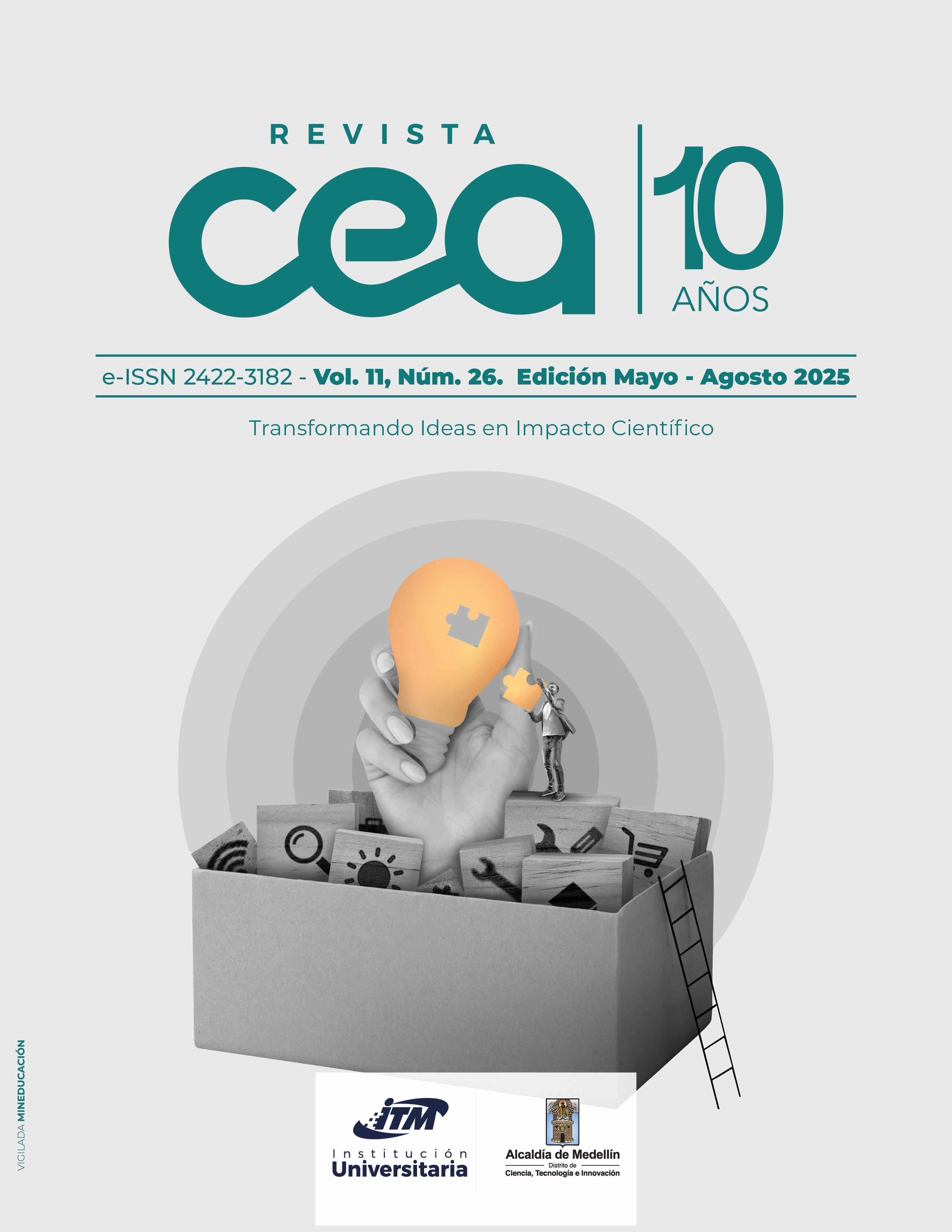The Current Context of Shopping Tourism in Spain: An Analysis of Purchasing Behavior and Motivations
Abstract
Objective: This paper aims to assess the importance that tourists place on shopping during their travels. Particularly, it seeks to identify the key factors influencing their purchasing decisions, with special attention to generational similarities or differences among Baby Boomers, Generation X, Generation Y (Millennials), and Generation Z (Centennials).
Design/Methodology: Based on data collected through a survey administered to residents of Spain, the study applies a quantitative methodology using descriptive and bivariate statistics.
Findings: The results indicate that, in Spain, shopping is generally not the primary motivation for travel. Nonetheless, nearly one-third of respondents acknowledged having visited a destination specifically to make purchases. Notably, seven out of ten Generation X participants reported doing so. This generation also exhibited a greater propensity to shop during trips, dedicating more time and budget to this activity than other age groups.
Conclusions: Price, promotions, third-party recommendations, proximity to accommodation, and product exclusivity are the most influential factors motivating tourist purchases. Despite this, shopping is considered moderately important when compared to other travel-related activities.
Originality: This study provides a novel perspective by examining shopping tourism through a generational lens. It contributes to the understanding of an economic phenomenon that holds significant potential for revitalizing local commerce and thus boosting employment and economic growth.
References
Acar, V., y Tanrısevdi, A. (2022). Tourist guides preparing tourists for shopping on guided tours. En G. Aktaş y M. Kozak (eds.), International case studies in tourism marketing (pp. 192-197). Routledge. https://doi.org/10.4324/9781003182856-22
Aina, A. O., y Alabi, O. J. (2022). Impact of the COVID-19 Pandemic on KwaZulu-Natal Generation Z Attitude towards Domestic Tourism. African Journal of Inter/Multidisciplinary Studies, 4(1), 362-372. https://doi.org/10.51415/ajims.v4i1.1014
Akram, N. A., y Farooqi, S. R. (2014). A model-based ‘varimax’sampling strategy for a heterogeneous population. Annals of Human Biology, 41(2), 118-126. https://doi.org/10.3109/03014460.2013.834970
Alabart-Algueró, J., Gutiérrez-Aragón, Ó., Cuenca-Fontbona, J., y Fondevila-Gascón, J. F. (2025). La comunicación en los eventos ecuestres: análisis de la publicidad previa, la retransmisión y su cobertura posterior. Cuadernos.info, (60), 302-322. https://doi.org/10.7764/cdi.60.84280
Albayrak, T., Güzel, Ö., Caber, M., Kılıçarslan, Ö., Dursun Cengizci, A., y Güven, A. (2021). How does perceived crowding moderate tourist shopping experience and satisfaction relationship? International Journal of Tourism Cities, 7(1), 46-62. https://doi.org/10.1108/IJTC-02-2020-0028
Almeida, A., Golpe, A., y Justo, R. (2021). Regional tourist heterogeneity in Spain: A dynamic spatial analysis. Journal of Destination Marketing & Management, 21, 100643. https://doi.org/10.1016/j.jdmm.2021.100643
Amin, M., Ryu, K., Cobanoglu, C., Rezaei, S., y Wulan, M. M. (2021). Examining the Effect of Shopping Mall Attributes in Predicting Tourist Shopping Satisfaction and Behavioral Intentions: Variation Across Generation X and Y. Journal of Quality Assurance in Hospitality & Tourism, 22(3), 367-394. https://doi.org/10.1080/1528008X.2020.1818667
Araújo-Pereira, G., y De-Sevilha-Gosling, M. (2017). Los viajeros y sus motivaciones: un estudio exploratorio sobre quienes aman viajar. Estudios y Perspectivas en Turismo, 26(1), 62-85. https://www.redalyc.org/pdf/1807/180749182004.pdf
Atsız, O., y Seyitoğlu, F. (2022). A netnography approach on the daily local-guided shopping tour experiences of travellers: An unexplored facet of the sharing economy. Journal of Vacation Marketing, 29(1), 103-118. https://doi.org/10.1177/13567667221078248
Baek, E., y Park, S. (2022). Planned or unplanned? Understanding the shopping behaviors and experiences of tourists. Journal of Vacation Marketing, 30(3), 392-407. https://doi.org/10.1177/13567667221142056
Baena, V., y Cerviño, J. (2024). Tourism in the Era of Social Responsibility and Sustainability: Understanding International Tourists’ Destination Choices. Sustainability, 16(19), 8509. https://doi.org/10.3390/su16198509
Baharum, B., Zahari, M. S. M., Hanafiah, M. H., y Bashir, M. A. A. (2023). Understanding tour operators’ perception and behaviour towards shopping streets: a qualitative perspective. International Journal of Tourism Cities, 9(2), 496-514. https://doi.org/10.1108/IJTC-10-2022-0238
Bauer, M., y Meier, M. (2011). Shopping tourism: A whole new experience. En A. Papathanassis (ed.), The long tail of tourism: Holiday niches and their impact on mainstream tourism (pp. 69-76). Gabler. https://doi.org/10.1007/978-3-8349-6231-7_8
Bergstrand, R., Vedin, A., Wilhelmsson, C., y Wilhelmsen, L. (1983). Bias due to non-participation and heterogenous sub-groups in population surveys. Journal of Chronic Diseases, 36(10), 725-728. https://doi.org/10.1016/0021-9681(83)90166-2
Boulhosa, I., y Casais, B. G. L. (2019). Motivations for Tourism Shopping In Department Stores: An Exploratory Research about Tourists’ Profiles Visiting El Corte Inglés Gaia. European Journal of Tourism, Hospitality and Recreation, 9(1). https://doi.org/10.2478/ejthr-2019-0003
Capone, F., y Lazzeretti, L. (2016). Fashion and city branding: An analysis of the perception of Florence as a fashion city. Journal of Global Fashion Marketing, 7(3), 166-180. https://doi.org/10.1080/20932685.2016.1166715
Chang, K. C., Cheng, Y. S., Kuo, N. T., y Cheng, Y. H. (2025). Impacts of Tourists’ Shopping Destination Trust on Post-Visit Behaviors: A Loss Aversion Perspective. International Journal of Hospitality & Tourism Administration, 26(1), 28-67. https://doi.org/10.1080/15256480.2023.2241030
Choi, M. J., Heo, C. Y., y Law, R. (2016). Progress in shopping tourism. Journal of Travel & Tourism Marketing, 33(1), 1-24. https://doi.org/10.1080/10548408.2014.969393
Cohen, S.A., Prayag, G., y Moital, M. (2014). Consumer behaviour in tourism: concepts, influences and opportunities. Current Issues in Tourism, 17(10), 872-909. https://doi.org/10.1080/13683500.2013.850064
Correia, A., Kozak, M., y Kim, S. (2017). Investigation of luxury values in shopping tourism using a fuzzy-set approach. Journal of Travel Research, 58(1), 77-91. https://doi.org/10.1177/0047287517741005
De-Juan-Vigaray, M. D., Garau-Vadell, J. B., y Sesé, A. (2021). Acculturation, shopping acculturation, and shopping motives of international residential tourists. Tourism Management, 83, 104229. https://doi.org/10.1016/j.tourman.2020.104229
Dong, Q., Ling, S., Zheng, C., Hu, Y., Lin, F., y Lee, S. K. (2024). Exploring the Determinants of Chinese Tourists’ Shopping Behavior During Shopping Tourism in Korea. Behavioral Sciences, 14(10), 971. https://doi.org/10.3390/bs14100971
Duffus Miranda, D., y Briley, D. (2021). Turista digital: variables que definen su comportamiento de compra. Investigaciones Turísticas, (21), 1-21. https://doi.org/10.14198/INTURI2021.21.1
Eneyo, V. B., Uttah, C., Oko, P. E., Onnoghen, U. N., Odok, A. O., Bassey, B. J., y Itu, P. C. O. (2023). Shopping Tourism at Calabar Shopping Mall: Assessing Tourist Satisfaction. African Journal of Hospitality, Tourism and Leisure, 12(4), 1225-1235 https://www.ajhtl.com/uploads/7/1/6/3/7163688/article_3_12_4_1225-1235.pdf
Esfandiar, K., Seryasat, M. R., y Kozak, M. (2024). To shop or not to shop while traveling? Exploring the influence of shopping mall attributes on overall tourist shopping satisfaction. Tourism Recreation Research, 49(6), 1411-1426. https://doi.org/10.1080/02508281.2023.2186088
Fondevila-Gascón, J. F., Gutiérrez-Aragón, Ó., Moreno-Arrones-Iglesias, P., y Alabart-Algueró, J. (2024). Estrategias de marketing para la Generación Silver en España: factores de éxito. Revista de Comunicación, 23(2), 91-106. https://doi.org/10.26441/RC23.2-2024-3538
Ganzabal-Learreta, M., Meso-Ayerdi, K., Pérez-Dasilva, J. Á., y Mendiguren-Galdospín, T. (2021). La incidencia de la edad y el género en los hábitos de uso de las redes sociales en la profesión periodística. El caso de centennials y millennials. Revista Latina de Comunicación Social, (79), 91-116. https://doi.org/10.4185/RLCS-2021-1525
García García, M., y Moral Jiménez, M. d. V. (2022). Motivación para viajar y satisfacción turística en función de los factores de personalidad. Pasos, Revista de Turismo y Patrimonio Cultural, 20(1), 31-44. https://doi.org/10.25145/j.pasos.2022.20.002
García-Milon, A., Juaneda-Ayensa, E., Olarte-Pascual, C., y Pelegrín-Borondo, J. (2020). Towards the smart tourism destination: Key factors in information source use on the tourist shopping journey. Tourism Management Perspectives, 36, 100730. https://doi.org/10.1016/j.tmp.2020.100730
García-Milon, A., Olarte-Pascual, C., y Juaneda-Ayensa, E. (2021). Assessing the moderating effect of COVID-19 on intention to use smartphones on the tourist shopping journey. Tourism Management, 87, 104361. https://doi.org/10.1016/j.tourman.2021.104361
Ghete, A. M. (2016). Classification of various forms of tourism. Annals of the University of Oradea, Economic Science Series, 25(2), 313-319. https://anale.steconomiceuoradea.ro/volume/2016/n2/031.pdf
Godovykh, M., y Tasci, A. D. A. (2020). Customer experience in tourism: A review of definitions, components, and measurements. Tourism Management Perspectives, 35, 100694. https://doi.org/10.1016/j.tmp.2020.100694
Gómez Punzón, J. (2021). Augmented reality in shopping tourism: Boosting tourism development through innovation in Barcelona. European Journal of Tourism, Hospitality and Recreation, 11(1), 1-10. https://doi.org/10.2478/ejthr-2021-0001
Gutauskas, F. A., y Tamagni, L. I. (2017). Perfil de los viajeros motivados por compras argentinos que viajan a Chile. FACES. Revista Iberoamericana de Ciencias Económicas y Sociales, 23(49), 55-71. https://eco.mdp.edu.ar/revistas/index.php/faces/article/view/81
Gutiérrez-Aragón, Ó., Fondevila-Gascón, J.F., Roca-Martínez, B., y Segura-Rodríguez, M. (2024). Criterios de aceptación del vehículo eléctrico por parte de la población española menor de 45 años. Revista de Estudios Andaluces, (47), 167-185. https://doi.org/10.12795/rea.2024.i47.08
Gutiérrez-Aragón, Ó., Gassiot-Melian, A., Alabart-Algueró, J., y Campos-Roig, M. (2025). Análisis holístico de la comunicación interna y externa de los grupos castelleros, como entidades depositarias de patrimonio cultural inmaterial. Pasos, Revista de Turismo y Patrimonio Cultural, 23(1), 243-258. https://doi.org/10.25145/j.pasos.2025.23.016
Guzmán Díaz, B. E., Parra Hernández, R., y Tarapuez Chamorro, E. (2024). Estrategia y generación de valor en atractivos turísticos: caso de estudio. Revista CEA, 10(23), e2892. https://doi.org/10.22430/24223182.2892
Hung, K., Ren, L., y Qiu, H. (2021). Luxury shopping abroad: What do Chinese tourists look for? Tourism Management, 82, 104182. https://doi.org/10.1016/j.tourman.2020.104182
Instituto Nacional de Estadística. (2025a). Personas viajeras por sexo, según destino y duración del viaje. INE. https://www.ine.es/jaxiT3/Tabla.htm?t=25755
Instituto Nacional de Estadística. (2025b). Población residente por fecha, sexo y edad. INE. https://www.ine.es/jaxiT3/Tabla.htm?t=10262
Jager, J., Putnick, D. L., y Bornstein, M. H. (2017). More than just convenient: The scientific merits of homogeneous convenience samples. Monographs of the Society for Research in Child Development, 82(2), 13-30. https://doi.org/10.1111/mono.12296
Juárez, L., Uslu, A., y Blasco, M. F. (2019). Drivers to build a powerful country tourism brand: an empirical study on millennials segment. Gastroia, Journal of Gastronomy and Travel Research, 3(4), 579-596. https://doi.org/10.32958/gastoria.575092
Kastenholz, E., Eusébio, C., y Carneiro, M. J. (2016). Purchase of local products within the rural tourist experience context. Tourism Economics, 22(4), 729-748. https://doi.org/10.1177/1354816616654245
Kemperman, A. D., Borgers, A. W., y Timmermans, H. J. (2009). Tourist shopping behavior in a historic downtown area. Tourism Management, 30(2), 208-218. https://doi.org/10.1016/j.tourman.2008.06.002
Kim, G., Duffy, L. N., y Moore, D. (2020). Tourist attractiveness: Measuring residents’ perception of tourists. Journal of Sustainable Tourism, 28(6), 898-916. https://doi.org/10.1080/09669582.2019.1708919
Lee, J. S., y Choi, M. (2019). Examining the asymmetric effect of multi-shopping tourism attributes on overall shopping destination satisfaction. Journal of Travel Research, 59(2), 295-314. https://doi.org/10.1177/0047287519832373
Leick, B., Schewe, T., y Kivedal, B. K. (2021). Tourism Development and Border Asymmetries: An Exploratory Analysis of Market-Driven Cross-Border Shopping Tourism. Tourism Planning & Development, 18(6), 673-698. https://doi.org/10.1080/21568316.2020.1837230
Lehto, X. Y., Chen, S. Y., y Silkes, C. (2013). Tourist shopping style preferences. Journal of Vacation Marketing, 20(1), 3-15. https://doi.org/10.1177/1356766713484727
Lewis, C., Kerr, G. M., y Burgess, L. (2013). A critical assessment of the role of fashion in influencing the travel decision and destination choice. International Journal of Tourism Policy, 5(1/2), 4-18. https://doi.org/10.1504/IJTP.2013.054052
Li, C. S., Zhang, C. X., Chen, X., y Wu, M. S. S. (2021). Luxury shopping tourism: views from Chinese post-1990s female tourists. Tourism Review, 76(2), 427-438. https://doi.org/10.1108/TR-08-2019-0335
Li, J., y Cao, B. (2022). Study on tourism consumer behavior and countermeasures based on big data. Computational Intelligence and Neuroscience, 2022(1), 6120511. https://doi.org/10.1155/2022/6120511
Liu, Y., y Choe, Y. (2023). Motivation-based segmentation of tourist shoppers to hainan during COVID-19. SAGE Open, 13(3). https://doi.org/10.1177/21582440231197497
Lopes, J. M., Gomes, S., Durão, M., y Pacheco, R. (2023). The Holy Grail of luxury tourism: A holistic bibliometric overview. Journal of Quality Assurance in Hospitality & Tourism, 24(6), 885-908. https://doi.org/10.1080/1528008X.2022.2089946
Makkonen, T. (2022). Outshopping abroad: Cross-border shopping tourism and the competitive advantage of borders. En D. J. Timothy y A. Gelbman (eds.), Routledge Handbook of Borders and Tourism (pp. 269-280). Routledge. https://doi.org/10.4324/9781003038993-24
Malkowski, A., Mickiewicz, B., y Malkowska, A. (2020). Shopping tourism as a factor in the development of peripheral areas: The case of the Polish-German borderland. European Research Studies Journal, 23(3),238-248. https://doi.org/10.35808/ersj/1635
Martín Roda, E., y Sassano Luiz, S. (2020). El turismo procedente de Argentina en Uruguay: un análisis comportamental cuantitativo. Cuadernos de Turismo, (45), 239-264. https://doi.org/10.6018/turismo.426111
Mihai, V. C., Dumitras, D. E., Oroian, C., Chiciudean, G. O., Arion, F. H., y Mureșan, I. C. (2023). Exploring the Factors Involved in Tourists’ Decision-Making and Determinants of Length of Stay. Administrative Sciences, 13(10), 215. https://doi.org/10.3390/admsci13100215
Moon, Z. (2017). Adapting and validating questionnaires. Developmental Psychology Section, 103, 51-55. https://doi.org/10.53841/bpspag.2017.1.103.51
Muro-Rodríguez, A. I., Pérez-Jiménez, I. R., y Sánchez-Araque, J. A. (2020). Impact of shopping tourism for the retail trade as a strategy for the local development of cities. Frontiers in Psychology, 11, 67. https://doi.org/10.3389/fpsyg.2020.00067
Nabi, N. (2023). Segmenting travellers of luxury destinations in a post-pandemic era. Service Business, 17(3), 747-770. https://doi.org/10.1007/s11628-023-00541-z
Noor, S., Tajik, O., y Golzar, J. (2022). Simple random sampling. International Journal of Education & Language Studies, 1(2), 78-82. https://doi.org/10.22034/ijels.2022.162982
Onofri, L., y Narain, U. (2025). Nature-based tourism impacts on national GDP and local communities: insights from systematic and narrative literature review. Sustainable Communities, 2(1), 2475788. https://doi.org/10.1080/29931282.2025.2475788
Otoo, F. E., Kim, S., y Choi, Y. (2020). Understanding senior tourists' preferences and characteristics based on their overseas travel motivation clusters. Journal of Travel & Tourism Marketing, 37(2), 246-257. https://doi.org/10.1080/10548408.2020.1740136
Pang, C., y Sanders, E. A. (2025). Shopping Tourism: Its Positive Impact on Mixed-Use Shopping Mall Communities (MUSMC). Journal of Hospitality & Tourism Cases. https://doi.org/10.1177/21649987251314897
Parra Vargas, E., De-Juan-Ripoll, C., Bueno Panadero, M., y Alcañiz, M. (2021). Lifestyle segmentation of tourists: the role of personality. Heliyon, 7(7), e07579. https://doi.org/10.1016/j.heliyon.2021.e07579
Pestana, M. H., Parreira, A., y Moutinho, L. (2020). Motivations, emotions and satisfaction: The keys to a tourism destination choice. Journal of Destination Marketing & Management, 16, 100332. https://doi.org/10.1016/j.jdmm.2018.12.006
Riva, N., Grandi, D., Cruzat, B., y Alvarado, R. (2024). Validación de cuestionarios para la medición de variables en salud: conceptos fundamentales. Revista Médica Revisada por Pares, 24(01), 1-9. http://doi.org/10.5867/medwave.2024.01.2746
Rusko, R. (2014). Shopping centres and tourism destinations: similarities and differences according to cases in Finland. Managing Leisure, 19(1), 71-87. https://doi.org/10.1080/13606719.2013.849504
Santos, V., Au-Yong-Oliveira, M., Sousa, M., y Costa, C. (2023). Luxury tourism from the traditional perspective to the sustainable trigger: Redefining new luxury tourism. Journal of Tourism and Development, 44, 113-144. https://doi.org/10.34624/rtd.v44i0.30909
Silva, R., Breda, Z., Brandão, F., Costa, R., y Costa, C. (2019). Shopping tourism: a destination management perspective. En Á. Rocha, A. Abreu, J. De-Carvalho, D. Liberato, E. González y P., Liberato (eds.), Advances in tourism, technology and smart systems: Proceedings of ICOTTS 2019 (pp. 477-487). Springer. https://doi.org/10.1007/978-981-15-2024-2_42
Sokhanvar, A., y Jenkins, G.P. (2022). FDI, tourism, and accelerating the rate of economic growth in Spain. The Journal of International Trade & Economic Development, 31(4), 493-510. https://doi.org/10.1080/09638199.2021.1988135
Sousa, B., Malheiro, A., y Veloso, C. M. (2019). Territorial marketing as a contribution to segmentation in tourism contexts. Shopping tourism conceptual model. International Journal of Marketing, Communication and New Media, 5, 93-116. http://u3isjournal.isvouga.pt/index.php/ijmcnm/article/view/376
Sthapit, E., Björk, P., y Rasoolimanesh, S. M. (2024). Toward a better understanding of memorable souvenir shopping experiences. International Journal of Hospitality & Tourism Administration, 25(1), 59-91. https://doi.org/10.1080/15256480.2022.2081278
Timothy, D. J. (2024). Tourism, Shopping and Connotations of Place. En C. M. Hall (ed.), The Wiley Blackwell Companion to Tourism (pp. 501-514). John Wiley & Sons Ltd. https://doi.org/10.1002/9781119753797.ch34
Ting, H., Lim, T. Y., De-Run, E. C., Koh, H., y Sahdan, M. (2018). Are we baby boomers, gen X and gen Y? A qualitative inquiry into generation cohorts in Malaysia. Kasetsart Journal of Social Sciences, 39(1), 109-115. https://doi.org/10.1016/j.kjss.2017.06.004
Urošević, M., Stanojević, M., y Đorđević, D. (2023). Urban tourism destinations in the world. Economic Themes, 61(3), 343-364. https://doi.org/10.2478/ethemes-2023-0018
Van-Loon, R., y Rouwendal, J. (2013). Vacation Behaviour: Frequency, Destination Choice and Expenditures. Tourism Economics, 19(5), 1005-1026. https://doi.org/10.5367/te.2013.0333
Vázquez Sacristán, I. A., Rodríguez Hernández, M., y Liberal Ormaechea, S. (2022). Physical and Digital Retail: Through the case of Dior Parfums Boutique in Champs-Élysées. Techno Review, International Technology, Science and Society Review, 11(1), 29-40. https://doi.org/10.37467/gkarevtechno.v11.3089
Vidyastuti, H. A. (2021). Influencia del Marketing Mix de servicios y la marca de lugar en la imagen del destino turístico. Revista CEA, 7(14), e1646. https://doi.org/10.22430/24223182.1646
Xu, X., Huang, D., y Shang, X. (2021). Social presence or physical presence? Determinants of purchasing behaviour in tourism live-streamed shopping. Tourism Management Perspectives, 40, 100917. https://doi.org/10.1016/j.tmp.2021.100917
Xu, X. A., Chen, F., y Gursoy, D. (2025). Shopping destination brand equity and service quality. Tourism Review, 80(2), 472-496 https://doi.org/10.1108/TR-08-2023-0597
Downloads
Copyright (c) 2025 Óscar Gutiérrez-Aragón, Miguel Guillén-Pujadas, Sílvia Xancó-Grau, Marta Solá-Estremo

This work is licensed under a Creative Commons Attribution-NonCommercial-ShareAlike 4.0 International License.

| Article metrics | |
|---|---|
| Abstract views | |
| Galley vies | |
| PDF Views | |
| HTML views | |
| Other views | |







